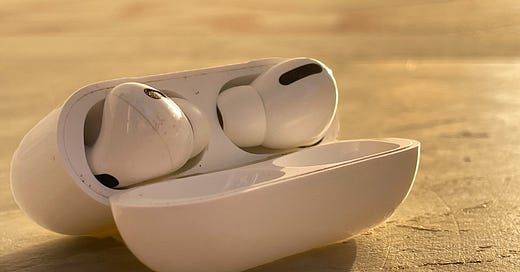The first thing I should probably state is that, legally, my headline is misleading. Airpods Pro are not officially hearing aids, they are PSAPs: personal sound amplification products.
Technically, however, in every other way (factually, actually, affordably, gloriously) they aid in the act of hearing for those, like me––and perhaps you––with mild to mod…
Keep reading with a 7-day free trial
Subscribe to Ladyparts to keep reading this post and get 7 days of free access to the full post archives.





